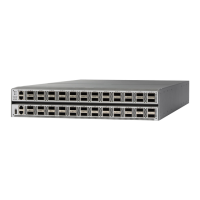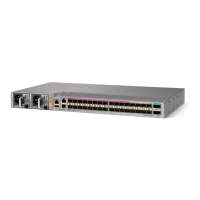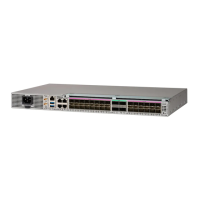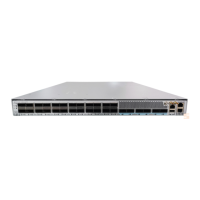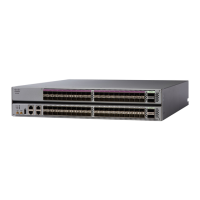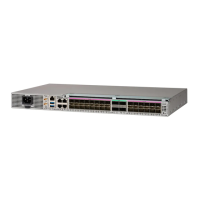RP/0/RP0/CPU0:router(config-ospf-vrf)# router-id 192.168.4.3
Configures a router ID for the OSPF process.
We recommend using a stable IPv4 address as the router ID.
Note
Step 5 redistribute protocol [ process-id ] { level-1 | level-1-2 | level-2 } [ metric metric-value ] [ metric-type type-value
] [ match { external [ 1 | 2 ] }] [ tag tag-value ] route-policy policy-name]
Example:
RP/0/RP0/CPU0:router(config-ospf-vrf)# redistribute bgp 1 level-1
Redistributes OSPF routes from one routing domain to another routing domain.
• This command causes the router to become an ASBR by definition.
• OSPF tags all routes learned through redistribution as external.
• The protocol and its process ID, if it has one, indicate the protocol being redistributed into OSPF.
• The metric is the cost you assign to the external route. The default is 20 for all protocols except BGP, whose
default metric is 1.
• The example shows the redistribution of BGP autonomous system 1, Level 1 routes into OSPF as Type 2 external
routes.
Step 6 area area-id
Example:
RP/0/RP0/CPU0:router(config-ospf-vrf)# area 0
Enters area configuration mode and configures an area for the OSPF process.
• The area-id argument can be entered in dotted-decimal or IPv4 address notation, such as area 1000 or
area 0.0.3.232. However, you must choose one form or the other for an area.
Step 7 interface type interface-path-id
Example:
RP/0/RP0/CPU0:router(config-ospf-vrf)# interface TenGigE 0/2/0/0
Enters interface configuration mode and associates one or more interfaces to the VRF.
Step 8 exit
Example:
RP/0/RP0/CPU0:router(config-if)# exit
Exits interface configuration mode.
Step 9 domain-id [ secondary ] type { 0005 | 0105 | 0205 | 8005 } value value
Example:
RP/0/RP0/CPU0:router(config-ospf-vrf)# domain-id type 0105 value 1AF234
Routing Configuration Guide for Cisco NCS 5500 Series Routers, IOS XR Release 6.3.x
89
Implementing OSPF
Configure OSPF as a Provider Edge to Customer Edge (PE-CE) Protocol
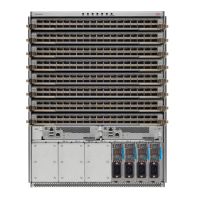
